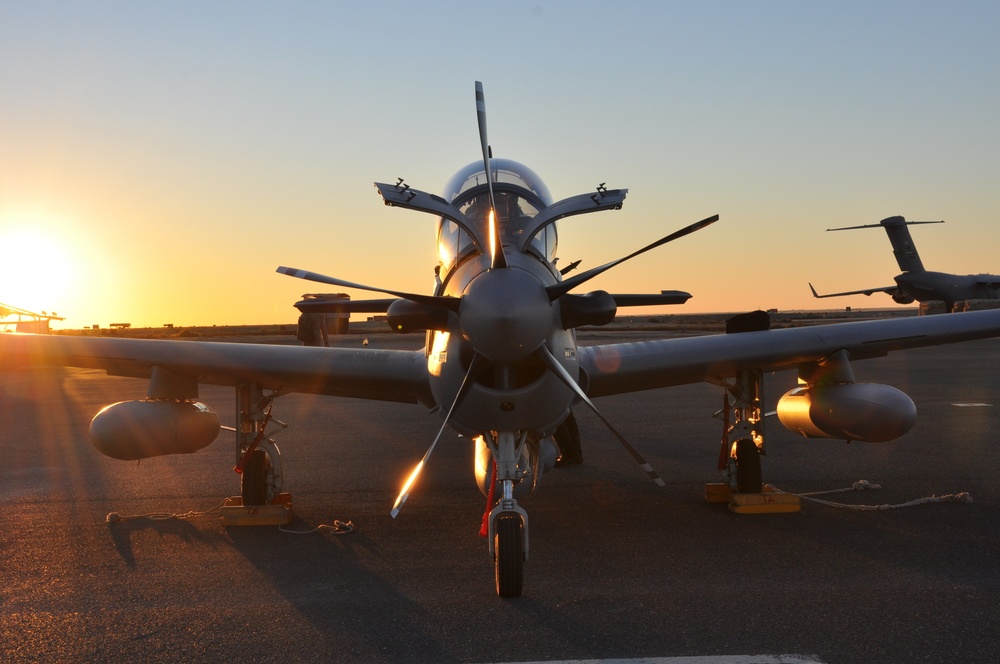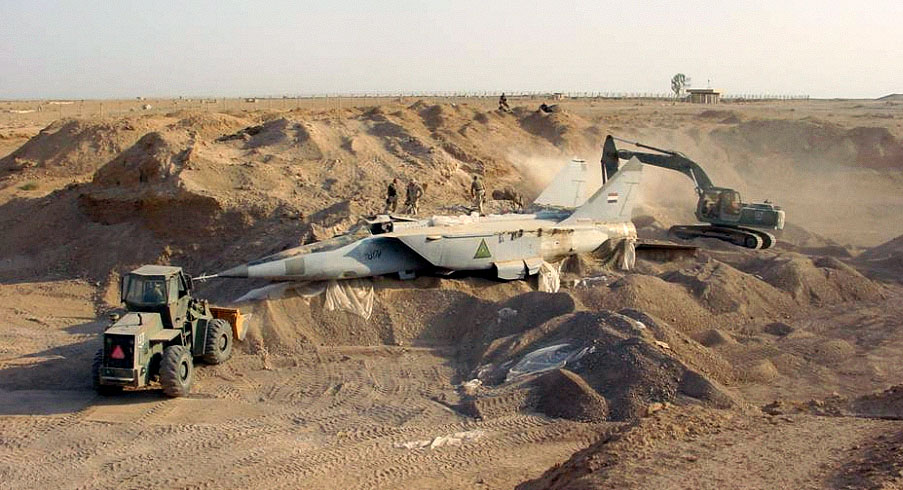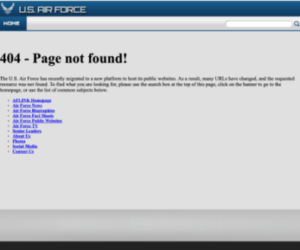
Relying extensively on an excellent paper by Dr. Daniel L. Haulman of the Air Force Historical Research Agency, we discussed – in an August 2010 piece — why the Iraqi Air Force “did not show up” during “Operation Iraqi Freedom” in 2003 and we quoted Haulman:
[W]hen United States and coalition forces invaded Iraq in 2003 they faced no Iraqi Air Force opposition. Not one Iraqi warplane attacked the invaders as they proceeded towards Baghdad.
The main reason the Iraqi Air Force did not show up is that it had pretty well been decimated during the years prior to the invasion and was “only a shadow of what it had been in 1991,” when the Iraqi Air Force was one of the largest in southwestern Asia, with well over 700 fixed-wing combat aircraft, including Russian MIG-29s and French Mirage F-1s.
However, during the air campaign of the Gulf War (Operation Desert Storm) and during , continuing hostilities through 1993, the U.S. Air Force shot down or destroyed on the ground a large part of the Iraqi Air Force.
In addition, “121 Iraqi aircraft made it safely to Iran, but they never returned.”
Finally, “extensive damage to the Iraqi military aviation and command and control infrastructure; sanctions that affected fleet repairs and logistics support; no-fly zones that restricted operational and tactical training; and renewed, heavy US and allied air bombardments in 1996 and in 1998 that destroyed or heavily damaged additional vital strategic assets,” all prior to 2003 made sure that, during Operation Iraqi Freedom, “[n]ot one Iraqi warplane attacked the invaders as they proceeded towards Baghdad.”
(In 2003, American forces did find several fighter jets buried in the desert, below)

Today, five months after Afghanistan fell to the Taliban, the same questions are being asked, “What Happened to the Afghan Air Force?” Why did it not show up when its country needed it the most?.
Among those asking the questions, and suggesting some answers, are James Cunningham and Joseph Windrem, both expert members of the Special Inspector General for Afghanistan Reconstruction (SIGAR).
In an article published at the Air University’s Journal of Indo-Pacific Affairs, pointing out the time (two decades), effort and money ($90 billion) the U.S. has spent building, training, equipping and supporting the Afghan Air Force (AAF), they ask “How did such a massive investment by the United States fail in such a key respect? And what lessons can be drawn from that failure?”
Of course, the circumstances under which the Iraqi and Afghan Air Forces operated and failed could not be more different. The Iraqi Air Force at the time was our enemy and the United States was instrumental in its destruction. The Afghan Air Force was our creation, our charge. However – according to Cunningham and Windrem – the U.S., unwittingly or not, contributed to its demise.
This author has been dubious about the performance of the Afghan National Defense and Security Forces, including the chaotic collapse of the AAF, during the Taliban takeover of their country.
Cunningham and Windrem write, “As the Taliban rolled into Kabul on 15 August 2021 on motorcycles and in stolen Humvees, they clearly did not fear the one thing that had kept them at bay for years: air strikes.”
For one thing, “…nearly 25 percent of all Afghan military aircraft were hundreds of miles away in Uzbekistan, Turkmenistan, and Iran, where their AAF pilots fled to escape the Taliban.”
Reports of the Afghan President and of other high government officials’ and military leaders’ escaping Afghanistan “triggered a mass exodus of airmen trying to save their equipment – and themselves. Pilots, aircrews and even some of their relatives piled haphazardly into aircraft and fled the country…”
Cowardly as this may seem, the collapse of the AAF was predictable according to some.
John Michel, a retired brigadier general who once led the U.S. training mission for the AAF, while expressing sadness, is not surprised, contending that “the U.S. template upon which it was modeled was not suited for a place like Afghanistan.” “It was an overly ambitious project that was, from the beginning, doomed,” he says
The authors of “What Happened to the Afghan Air Force?” expand upon Michel’s conclusion.
“The absence of the AAF in the final days before the Taliban takeover” they say, “was not some 11th-hour disaster. It was the last event in a long chain of causality that SIGAR has been sounding alarms about for years…” They continue, “In Afghanistan, the United States tried to create a military force that was a mirror image of America’s own—that is, ground forces that rely on overwhelming air superiority—without providing the Afghans with an air force that could maintain, train, and equip itself without US support.”
Read the full report HERE.
















